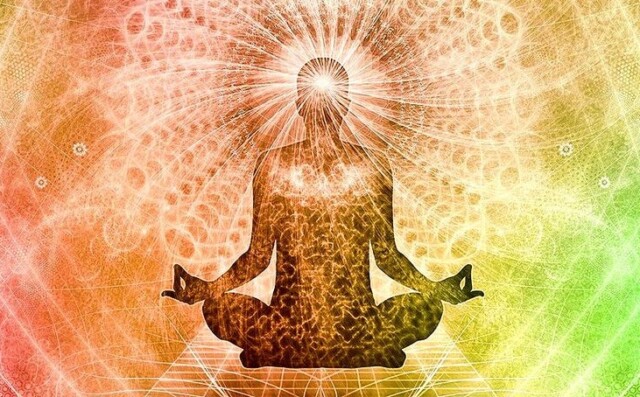Yogic Way of Life: 6 Proven Life-changing Factors for Inner Harmony and Fulfillment
“Change is not something that we should fear. Rather, it is something that we should welcome. For without change, nothing in this world would ever grow or blossom, and no one in this world would ever move forward to become the person they’re meant to be.” — B.K.S. Iyengar

As a creation, the human body stands out and is superior to all other living beings. By virtue of our previous life, we achieved this human birth. As a result of man’s excessive desire for worldly happiness, he commits all heinous acts, forgets the real values of life, and thinks that worldliness is true happiness. Sri Ramakrishna Paramahamsa said, “A boat may be on the water,
but there should not be water inside the boat” – A sadhaka may be in the world. But worldliness should not be in him.”
In a world characterized by chaos, stress, and constant change, the yogic way of life offers a sanctuary of balance, well-being, and self-discovery. Rooted in ancient Indian philosophy, yoga is not merely a physical practice but a holistic approach to existence that encompasses the body, mind, and spirit.
What is yogic way of life and who is real yogi?
We all have the false illusion that one who wears a saffron dress or performs asana and pranayama is a yogi. Many of our Vedas and scriptures state that one who has the Bala (strength) can live a yogic life or become a real yogi. It could be a physical, mental, or spiritual strength. But many of our Vedas and scriptures says that one who has Bala(strength) can achieve yogic life or he is a real yogi. This strength could be physical, mental or spiritual strength.
Body and mind are inseparable. Pain and pleasure are also experienced by the mind as they are experienced by the body. A happy and peaceful mind develops strength in the body. Our physical bodies become weak and lusterless if our minds are in pain.
The yogi is the only one capable of synchronizing them correctly. Indian core culture is the only place where you can learn about yoga and how it forms the basis for other sciences.
The word “yoga” has larger horizon: some refer it as union, knowledge or matter and some other refer as relations or means. The core definition of the word can be concluded as ‘upaya’ which means path or way through which we can attain something. Here something refers to “Supreme Self” which is a translation of the word ATMA as described in Vedanta. Atma is a soul of a man, and all souls are part of an infinite and surrounded by indwelling Spirit. The essential aspects of a person’s individuality including body, mind, and personality which are all subject to birth decay and death and are therefore not eternal in nature. Thus, the way of establishing the mind in the Self should be known as Yoga.
The great sage and founder of Yogic Science Maharshi Patanjali states that
योगश्चित्तवृत्तिनिरोधः ॥२॥
yogaś-citta-vṛtti-nirodhaḥ — Yoga Sutras 1.2
Process of Dealing with the inner consciousness. It is important to keep in align our sense organs with mind to grasp anything. It is easy to concentrate the mind on external things; the mind naturally goes outwards but not inward. The power of the mind is like rays of light dissipated; when they are concentrated, they illumine. When it is properly guided and directed towards internal power the eternal bliss can be achieved. The hymn of Katha Upanishad affirms:
तां योगमिति मन्यन्ते स्थिरामिन्द्रियधारणाम् ।
tāṃ yogamiti manyante sthirāmindriyadhāraṇām .
Yoga prevents our mind from going toward external objects. Per example if any junk food or anything which are harmful to our health is not tempting you then you gained the control over the mind. The finer is always the cause, the grosser the effect. So, the external world is the effect, and the internal is the cause. The man who has discovered and learned how to manipulate the internal force will get the whole universe’s bliss.
Now we have to put forward a question that by the mere grasp of yoga’s meaning or by a mere discussion of the pros and cons of this intellectual grasp one cannot truly experience the Yogic life. For, as a good knowledge of culinary science does not satisfy hunger, same way one cannot achieve Supreme Self just by understanding the word’s definition. Thus, Scriptures show us only the right path. Finally, it is left to us to understand them and to put them into practice. So as an aspirant we need to find the best Guru and by his grace and with the constant practice of yoga we can achieve nature of supreme peace and eternal bliss.
What are the factors we need to keep in mind to achieve the Universal Self?
The elaboration of the same has been given in the Ashtanga Yoga. According to A Yoga there are 8 limbs or steps, and these comprise: YAMA, NIYAMA, ASANA, PRANAYAAMA, PRATYAHARA, DHAARANA, DHYANA, & SAMADHI.
Along with this, those who do not hesitate to practice celibacy(brahmacharya) and purify their Naadi will realize the gaze of real life. These naadi’s are of three types: Dhamani, Nadi and Sira. These nadis are the senses that convey our inner energy through the prana to the entire body along with air, water, blood. True brahmacharya is the surrender of the human mind to the supreme entity.
Youth in today’s society argue differently: The young say one should eat whatever one wants, eat as much as one wants, and live as one wishes. Why should life just be dull and normal? Observe a while, even animals do this and will die one day. As a human, who is an intelligent animal, when he does this, he gets caught in the vortex of life and death and is born again and again without being freed from the bond. Consequently, he becomes weak in the struggle for survival. As it is said in the scriptures:
“नायमात्मा बलहीनेन लभ्यो
Nayam atma balahinēna labhyō” – Mundaka Upanishad (3.2.4)
The Self cannot be gained by the weak. Death occurs to our body. But our soul is transmitted from body to body and is punished for the sins committed in the previous life.
In the modern world, yoga is often associated with physical postures (asanas) and flexibility. While the physical practice is a valuable aspect of yoga, the yogic way of life extends far beyond the mat. It’s a 24/7 commitment to conscious living, guided by the principles of yoga and one can achieve universal self with practice of these:
1. Physical Practice (Asanas and Pranayama):
The practice of physical postures (asanas) promotes flexibility, strength, and balance. It not only benefits the body but also serves as a gateway to mindfulness. By linking breath with movement, practitioners cultivate present-moment awareness. Pranayama, or breath control, enhances vitality and mental clarity.
2. Mental Well-Being (Meditation and Mindfulness):
Meditation is a core component of the yogic way of life. It is a practice of quieting the mind, leading to enhanced focus, emotional regulation, and self-awareness. Mindfulness, derived from meditation, encourages being fully present in each moment, fostering a sense of peace and contentment.
3. Healthy Diet (Yogic Nutrition):
Yogic way of eating promotes mindful and balanced eating. It includes a diet that is sattvic, emphasizing fresh, plant-based foods that support physical health and mental clarity. It also aligns with the principle of Ahimsa, promoting non-harming by choosing food sources that are sustainable and ethical.
4. Rest and Recovery (Yogic Sleep):
Yogic sleep, or Yoga Nidra, is a state of conscious relaxation that leads to profound rest and rejuvenation. It is a practice of deep rest, helping to alleviate stress and promote mental well-being.
5. Emotional Well-Being (Emotional Regulation):
This life encourages emotional regulation by practicing equanimity and self-awareness. It involves the acknowledgment and healthy expression of emotions.
6. Spiritual Growth (Self-Realization):
At its core, the yogic way of life is a spiritual path. It aims for self-realization and union with the divine. This may involve the study of sacred texts, the pursuit of higher knowledge, and the cultivation of devotion.
The Transformative Power of Yogic life
Embracing the yogic way of life is a journey of self-discovery and inner transformation. It offers a path to wholeness and well-being, helping individuals navigate the complexities of the modern world with clarity and resilience. As you integrate the principles of yoga into your daily life, you’ll find that it’s not merely a set of practices; it’s a way of living with intention, purpose, and a deep connection to your true self and the universe.
In closing, the yogic way of life is an invitation to live with intention and mindfulness. It encourages us to move beyond the superficial and temporary, connecting with the eternal and profound aspects of our existence. It is a path that leads to self-realization, inner peace, and a life infused with purpose and joy. Embrace this way of life, and you’ll find that it’s not just a practice; it’s a profound and transformative journey.


